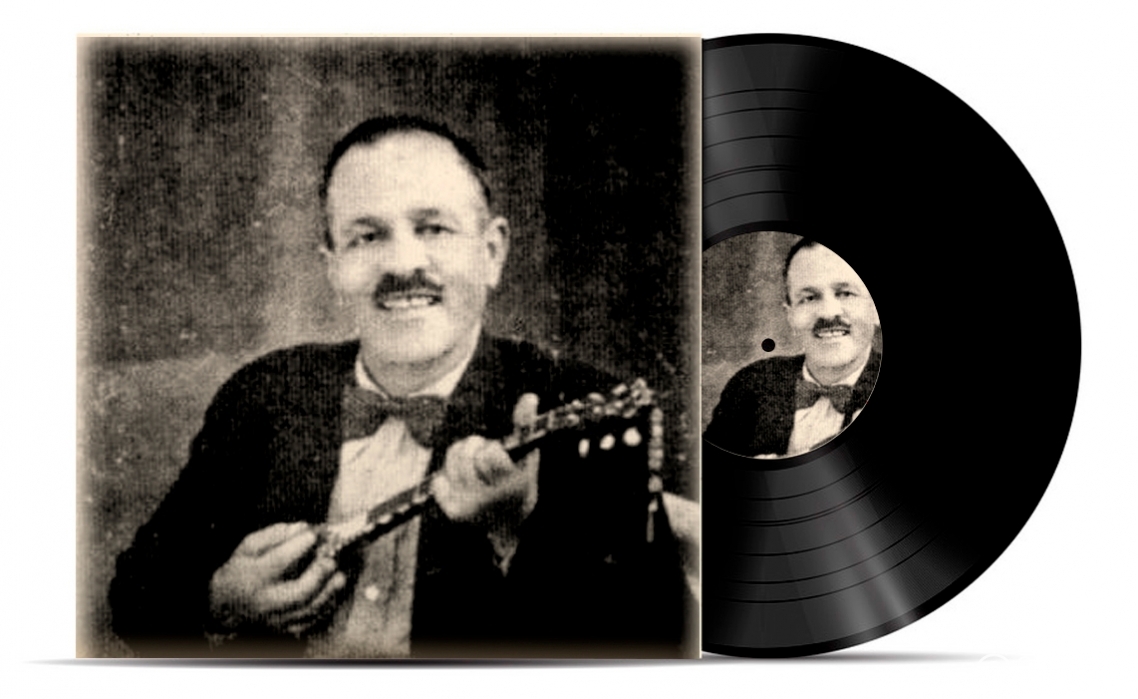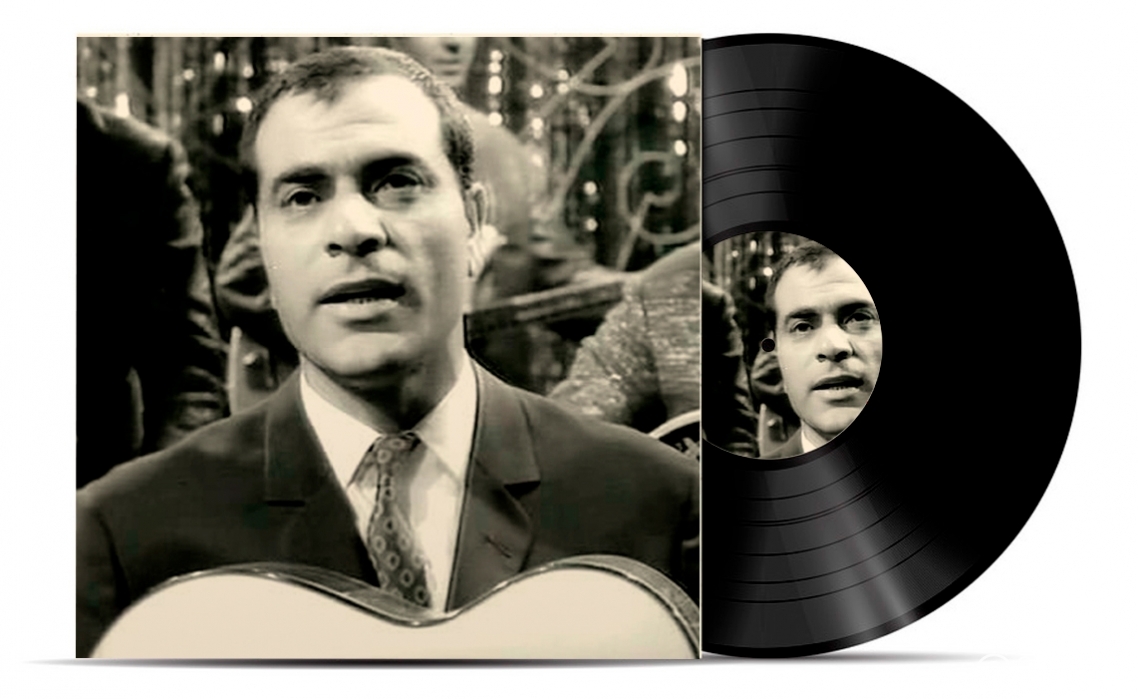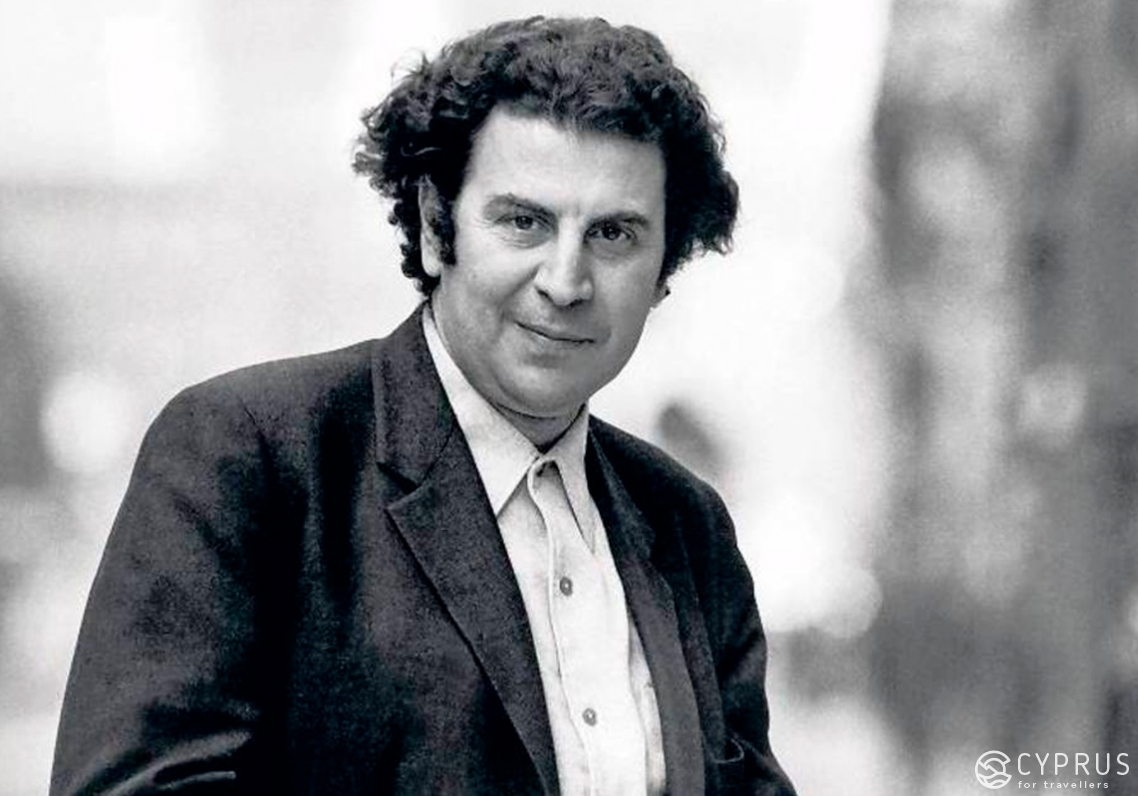Oh yes, Cypriots know how to have a good time, and many are very proud of their local folk music, songs and dances. One of the most popular types of music here, like in Greece, is the folk romance style “rebetiko”. The most popular dance styles — the tsifteteli, syrtos and zeimbekiko — originated from Greece, while there are also styles with the exclusive flair of the locals: the sousta and the tatsia — a spectacular performance involving a multitude of glasses.
To ensure that these names don’t remain an exotic array of sounds to many of us, we’re going to speak about them in a little more detail today.
Today, we will try to unravel the intertwining of styles and influences for which the music culture in Cyprus is renowned. We’re also going to somewhat “enlighten ourselves” by listening to composers from different eras and genres. Any objections?
-
First off, let us say that the simplest method of hearing and learning more about the local music culture is to attend festivals, get yourself a table in a traditional restaurant or even find a club with authentic tunes [1]. Cypriots can often be seen here singing their hearts out to artists, stirringly dancing on tables or even smashing plates on the dance floor with reckless abandon.
Well, unlike in Greece, it’s mainly the men who sing in Cyprus, but when it comes to dancing… “everyone dances!”.
As for traditional folk songs: they are sung in Greco or Turkish-Cypriot dialects [2] (see here for more on this).
Another significant component of “musical entertainment” on the island is the tsiatista. This is vocal poetry (or rather, rhymed) improv, which will resemble Cretian mantinades to “clued in” experts and connoisseurs.
Music Festivals in the Republic of Cyprus: Where and When
Faneromeni Festival
This art event is dedicated to Cypriot folklore, and Greek mythology: at its core is a synthesis of modern art forms. During one of the performances, for instance, an animated series of video art, based on geometric motifs from exhibits in the collection of the Bank of Cyprus Cultural Foundation, was projected onto a massive costume worn by a female dancer. This provided a visual interpretation of live music in combination with a recording — both continuing and “animating” the dancer’s set of movements.
During performances, the Foundation’s museum and exhibitions are open until midnight to hold night-time events.
Entry is free, for more information, please call: (+357) 22128157
“Kypria”
Every year (from the beginning of September to mid-October) the international arts festival “KYPRIA International Festival” is held in Cyprus, which includes opera and theatre performances, music and dance shows, as well as events dedicated to cinema and fine arts. Artists and international-level troupes from Cyprus, Greece and other countries take part.
Traditional music plays, people sing rebetiko and perform the most popular dances. On the island today: tsifteteli, hasapiko, syrtos and yes, zeimbekiko.
Events are held throughout the island cities and organised by the Ministry of Culture and Education, with the support of town councils.
Website: www.kypria.org.cy
Telephone: +357 70002212
Mediterranean Folklore Festival
The Cultural Heritage Association of Nicosia, in collaboration with the municipality of Larnaca, are the organisers of the Mediterranean Folklore Dance Festival in Larnaca, held every Autumn.
There are a good number of creative collectives and folk-ensembles: 14 from countries of the Mediterranean (Greece, Italy, Israel) and Europe (Slovakia, Armenia, Lithuania, Latvia, Romania etc.), as well as 15 teams from Cyprus chosen to take part in the festival. Aside from the performances, the Festival programme also includes a folk dress exhibition (by The Pierides Foundation) and a colourful folk parade through the main streets and squares of the city.
Telephone: +357 77777181
Fengaros
Held in the village of Kato Dris, this festival is worthy of special mention amongst the rural festivals. Every August, over three days in Summer, musicians come here from practically the world over to present their new works and original live music!
Yet again, the scenic village of Kato Dris will become the festival’s location, where three different squares gather spectators and participants. As a rule, the programme annually consists of more than 30 parts: artists from Cyprus, Greece, Italy, Kuwait, Nigeria, Israel, USA, Australia and England. Events will take place parallel to the main shows in the local Museum of folk art.
Paid entrance.
For additional information, please call: +357 22261000 / 25336079 / 24255880 / 23820860
Website: www.fengaros.com or on Facebook: Fengaros
Festivals of Traditional Cypriot Music also Take Place Beyond the Island’s Limits:
For example, the USA is home to the Cypriot Emigrants Cultural Organization of America, Inc. (CYPRECO). Its founder and president, Elena Maroulleti, together with like-minded people, hosts annual festivals and concerts (including rebetiko) to promote Cypriot folk culture and traditional art and crafts. They also organise performances by folk groups from Cyprus and Greece throughout the whole state of New York.
Great Britain: evenings and festivals of Cypriot culture are also held here from time to time. One of the most interesting is considered the Camden [3] Cypriot Festival (first held in 1991).
At the time, the poetry of Lysandros Pytharas, one of the founders of the Cypriot Arts Forum, accompanied by music from Andy Nicola, was read at the Hampstead Theatre.
His works could be heard at Apples and Snakes, as part of the same festival.
Besides, several years earlier, the poet collaborated with Channel 4 to film the documentary "Rembetika — The Music of the Outsiders" (in 7 parts, see here)
The Camden festival is held every summer, over two weeks, and still runs today. The programme includes entertainment for the entire family in Camden Square, performances for children, donkey walks, large feasts and poetry evenings, as well as concerts playing folk music and dance (from both communities of the island).
Aside from the festival, seminars and conferences related to Cypriots and aspects of the "Cyprus problem" are held on the same days at Camden City Hall.
Dancing
Folk dances vividly reflect all the subtleties in the image and lifestyle of Cypriots: thanks to authentic folk costumes and the sound of musical instruments, they’re a sight to behold. And yet, this is not the only reason why the locals, along with numerous tourists and folklore collectors, love these dances and participate in music festivals with great interest.
The villagers’ motifs and typical movements (artisans at work or villagers harvesting etc.) are interwoven into the movements of the dancers, enriching the choreography. The dances are based on traditional situations and important events (weddings) in the lives of both the rural community and representatives of the urban working class, including the Greeks and Turkish-Cypriots. Wedding dances, in particular, have become and remain the most popular, colourful and commonly performed styles, for instance: “Karchilamas”, “Syrtos”, “Zeybek”. There are also other holiday dances, such as the famous, purely feminine forms “Arabiyes”, resembling the belly dance, or the (Tsifteteli), with elements of gipsy music.
Greek dancing (Khoros), naturally, traces its origins into times of old. It’s an ancient tradition which has been described by many great authors of the past: the two Greeks Plato and his teacher Aristotle, the Romans Plutarch and Lucian, and others. The islands have considerably enriched the various styles that exist today with their interpretations: each region has formed its own choreography (totalling more than 10,000 traditional dances originating from all regions and corners of Greece). Along with them, there are also “general Greek” dances: syrtos, hasapiko and others.
Traditional Greek dance has a strict "structure" (composition) and age "requirement" for its dancers, due to the severe social burden it bears ... Most importantly, it functions to unite the community on holidays and in moments of particular importance, such as Easter, days of grape collection or on feast days; this principle also applies at key moments in the lives of individuals and families — for example, during weddings.
Nisiotika (from the Greek: νησί or "island")
The common name of folk dances from Greek islands have originated from Ancient Greece: Syrtos, Kalamatianos, Sousta, Pentozali, Ikariotikos and others.
Folklore occupies an essential place in the culture of Cypriot-Turks who, like the Greeks, thanks to their location on the island, have absorbed influences from different cultures, simultaneously preserving and enriching their own originality. The Romans, Byzantines and Venetians impacted the cultural heritage of this Mediterranean island.
Turkish-Cypriot folk dances are still performed and loved by the locals — they are also known beyond the borders of Cyprus. After all, many folk dance groups regularly take part in international festivals which are held accordingly throughout the year (along with festivals and folklore holidays in the Greek-Cypriot community) in Northern Cyprus, with the participation of artists from abroad.
-
We’re going to delve into more detail about the types of dances practised by both communities, the majority of which are in Cyprus. We’re going to learn how they look in Greek tradition and among the Turkish-Cypriot community — indeed, aside from the differences in dress, both areas have specific features in the structure and execution of their dances.
Karsilamas
Karsilamas or Antikristos — defined in both languages as “face to face” — is, essentially, a couple’s dance (performed by two people or an even number of participants who, “by default”, share a genuinely strong friendship and bear goodwill towards one another).
This is the “Turkish” version, while below, we will describe how the “women’s Antikristos”, with headscarves, is performed by Greek-Cypriot women:
So, we can see that “separate” forms of karsilamas exist: men’s and women’s. Headscarves are sometimes used, while in some cases, a pair of dancers hold onto one shawl together. In some variations, the dance has become more entertaining and playful in the eyes of spectators, for each of the participants now attempts to demonstrate solo steps: jumps, turns and others — with leg to leg taps or arms to the floor etc. The karsilamas has its own order of steps to be followed.
Syrtos
The name Syrtos or Sirtos originates from the Greek word «σύρω» (to drag) — this is not only a dance form but also a type of folk music which was acknowledged by experts as the oldest rhythm in Cyprus, whose foundations gave subsequent rise to many other folk dances.
Incidentally, syrtos is the common name for recognised Cretian dances [4]. Elements of Turkish motifs — the form of Syrtos namely danced in Cyprus — can be easily “read” in these Cretian forms.
The rulers of the Ottoman Empire are known to have loved this music and even composed songs, as well as personal melodies, based on the Syrtos motif. The Hidjaz Syrto — whose authorship belongs to the 32nd Sultan of the Ottoman Empire Abdul Aziz (1830-1876) — is amongst one of those created and still performed today. Modern Turkish-Cypriots call it the Aziziye Sirto, and its melody is well known to many Greek-Cypriots from the older generation.
I wonder if you can recognise the syrtos in the next clip?
Kalamatianos
This is a Greek folklore dance and one of the most famous and early forms, native to Peloponnese.
It is popular on the island and has a common origin with the syrtos, emerging from the city of Kalamata (in the southern part of Peloponnese), which is often mentioned in the accompanying song.
Artists who regularly tour the world often have the kalamatianos in their repertoire.
Zeybek
… or Zeimbekiko (in Greek: Ζεϊμπέκικο, from the word “zeibektdes”, meaning “immigrant”) — is a folk dance performed by Greek-Cypriots and Rhodian Greeks.
According to some sources, it is native to Thracia (an Eastern region of the Balkans) and was once very popular in Northern and Western Anatolia, possessing a considerably free choreographic structure. In the past, it was only performed by one dancer, and nobody could “include themselves” in another’s routine without being punished, as this would be deemed disrespectful.
Zeimbekiko is considered the only Greek solo dance.
In our day, the public has still yet to lose interest, though it is now performed more often in a group. Dancing etiquette states that, if at a festival a participant stops, their place is taken by anyone next in line and wishing to dance.
The zeimbekiko is also danced in the North of Cyprus — and only by men. Besides, a Thracian sword was used in the ancient version practised by the Turkish-Cypriots. With it, the dancer would demonstrate the movements of an attacking warrior. See here for the Anatolian version.
Tsifteteli çiftetelli and Arabiye
Essentially, this is an erotic dance.
It originates from the eastern belly dance, preserving the same characteristic movements and structure (which is why it’s often called an “Arabic” dance.
This is sometimes a routine purely for women — to attract the attention of a specific man [5]; or it’s a couple’s dance, imitating a dance performed by lovers. Here is the contemporary Greek routine:
This is a more restrained version, performed by Turkish-Cypriot women with male participants. Even though they are hidden under the thick national dress, all elements of the belly dance will, no doubt, be noticeable (composed by «Bahriye Ciftetellisi»):
Syrtaki
Today, sirtaki or syrtaki (in Greek: συρτάκι), is a famous “Greek” dance whose choreography was created by Giorgos Provias. He designed it based on the music of Mikis Theodorakis (née 1925), where the fast and slow rhythms of the syrtos and hasaposerviko (a quickened version of the “hasapiko” dance, from the Greek χασάπης meaning butcher, and σερβικά — Serbian) are combined and alternate with one another. The music was composed for the 1964 film “Zorba the Greek” [6], starring the famous actor Anthony Quinn. It is known today as the “Zorbas” or “Zorbá’s dance".
Surprisingly, the syrtaki dance isn’t generally considered a traditional Greek routine but is “in theme” with it.
As Anthony Quinn recalled, not long before shooting the final scene where he was to dance the syrtos, he injured his leg. This meant that stomping his foot, energetically pacing “like a Greek” and leaping, was extremely painful for him. Despite this, he broke position and began to improvise, dragging his leg up in the dance.
When the Cypriot director Michael Cacoyannis (Μιχάλης Κακογιάννης, 1922-2011) asked him what he was dancing, the actor jokingly replied: “This is the syrtaki — a folk dance. The locals taught it to me”.
You can see the resulting dance in the video here:
Zorbas, the Dancing Greek, Conquers the World…
The Zorbas is very popular in Cyprus. Greek-Cypriots, especially the very young members of the community, often put on performances and flash-mobs right on the city streets, like for instance, in 2015, on Lidra Street in Old Nicosia:
It is also commonly performed abroad if several Greeks get together (Birmingham, 2012):
Even those not intending to dance, who are just going about their everyday business, sometimes have a jig to the “Zorbas” (Ottawa, 2015):
So, if you see and hear this recognisable tune inexorably gathering momentum, don’t be shy — join in and let your hair down!
But that’s not all. You can catch the “Zorbas” in Moscow, for instance, on Red Square (The “Spasskaya Tower” Festival, 2011) performed by the Greek Air Force ensemble:
If, for a second, it seemed to you that the syrtaki has already “taken over” the whole world, then, believe me, you’re not alone.
As we complete our “ode” to this lively dance, it’s impossible not to recall the words of detective Jake Peralta, the protagonist from the police comedy sitcom “Brooklyn 99” (the USA, 2013). Amid a hostage situation, he shares his deepest feelings with a colleague:
“You’ve gotta be Greeks.”
“Why?”
“I don’t trust the way the Greeks dance”.
Songs
The island’s song culture is no less precious. Thanks to the work of folklore collectors, as well as the inspiration of modern musicians and composers keen on ancient sources and traditions, songs are today a part of our lives in contemporary reading. It has both gained a “breath of life” and made us think about eternal values, revealing to us the beauty and harmony of simple melodies, as well as the artists of the past, whose voices are superb in their sincerity.
You can familiarise yourself with a repertoire of ancient and well-known Cypriot songs (each has an English translation beneath) by following the link here.
Many are still sung to this day… I’ve managed to find the recordings for several of them.
For instance, here is the beautiful, touching lullaby “Agia Marina” (Αγια Μαρινα), performed by Sonia Theodoridou from Greece — in it, a mother entrusts her dear babe and his dreams into the care of the patron Saint Marina.
There’s also the joke song “I asked you to brush your hair a little” (Είπα σου χτενίστου λίο), sung by Kyriakou Pelagia, a native to Paralimni, where a man talks his beloved into not cutting her hair, as it frames her beauty. Instead, he persuades her to comb it, so she looks like the Virgin Mother.
Finally, another song is the famous folk love-serenade “Black Eyes” (Μαυρα Ματια) in Cypriot (it’d be a crime not to have this here). It is performed by the famous Kalliopi Spyrou, a native to Kythrea and acquaintance of my mother in law:
Here, boys are making advances on a girl:
“Hey, black-eyed girl, show us your wondrous eyes burning bright like fire…
If they catch my poor heart, they’ll rip it into pieces…”
Urban Song Culture: Rebetiko, Elafrolaïkó and Éntekhno [7]
Rebetiko, or urban Greek folk romance, is also the name of a folk song (in one of its forms — a song for criminals or string-pullers), which arose and spread in Greek society in the 1920s – 1936. It later made an appearance in the 1950-60s (in the form of the so-called "Greek blues”) after gaining popularity.
Generally, the roots of this genre, which is currently experiencing a bout of new life, can be traced back to the deep antiquity. Aside from the tunes listed, several researchers have also detected Slavic influence, as well as notes of gipsy melodies.
Officially born in the mid-19th century, as a “mixture” of musical influences from neighbouring countries, the future rebetiko also absorbed elements of Byzantine church music and others.
In general, the characteristic features of an urban Greek folk song are a love, drama, tragedy and a clear rhyme.
An essential feature of a Greek folk song is, in fact, a detailed reflection of the history of contemporary Greece.
-
Amongst the many talented composers and artists, there are several who are most well-known:
Roza Eskenazi (1875-1980) — the most celebrated singer [8] of this genre and a composer: throughout her entire career, she performed 376 rebetiko songs, 26 of which she composed herself.
Another, no less famous individual, acknowledged by experts in this genre as the main “Rebetiko" singer between the two world wars, is Rita Abatzi (1914-1969), whose discography of love songs began way back in 1932,.
Yiorgos Ampatis (nicknamed Batis or Tsoros) (1890-1967) was a famous musician and founder of the school of folk dance.
Markos Vamvakaris (also Rokos, 1905-1972) was a composer, pioneer and the “patriarch” of “rembetika”.
Apostolos Kaldaras (1922-1990) was one of the most prominent rebetiko composers who played the guitar and bouzouki.

Laiko
The “laiko” (λαϊκό, which in Greek means: folk and popular) originated in 1950.
Soon after, with the support of radio and TV, the genre was widely distributed throughout the entire country, heard in many restaurants, clubs and on dance floors.
One of the central figures here still remains Markos Vamvakaris.
Amongst the musicians of “elafro” — one form of laiko — it is worth mentioning Michalis Suyula (Suyuldzoglu, Μιχάλης Σουγιούλ, 1906-1958). The following musicians and singers also deserve recognition: Sofia Vembo (Σοφία Βέμπο, 1910-1978) — performer of folk romance and pop numbers, and Danai Stratigopoulou (Δανάη Στρατηγοπούλου, 1913-2009), who performed more than a thousand folk songs; as well as performers Nikos Gounaris, Tony Maroudas and others.
In our day, the texts for all laiko songs are written only in Greek, with traditional motifs for Greek culture predominant in them.
Some famous laiko singers are Stelios Kazantzidis (Στελιος Καζαντζιδης), Manolis Angelopoulos (Μανολης Αγγελοπουλος), Katie Gray (Καιτη Γκραιυ), Paul Panou (Πολυ Πανου) and others.

Entechno
Following after laiko, the time of so-called “entechno” (εντεχνο, roughly meaning: “artistic music”) came in the 1960s. This form had become even more “European” (gravitating towards it), joining the folk “laiko” with contemporary Greek poetry.
The creative works of the great Greek composer and musician, Mikis Theodorakis, are a textbook example here. He wrote the famous syrtak theme “Zorba the Greek” (sometimes the dance is also known as “Zorbas”). Along with it, “Ta paidia tou Pirea” (Children of Piraeus) — the work of Manos Hatzidakis — simultaneously became a popular entechno tune. The song was featured in the film “Never on Sunday” (in 2004, it became the hymn for the Olympic Games in Athens).

Spiritual Forms
Well, holidays are holidays, yet sometimes, each of us yearns for some solitude and the opportunity to reflect on eternity: in such moments, spiritual music, which has also become popular in Cyprus, for a specific part of the population, feels closer than ever before.
Orthodox people will more likely gravitate to Byzantine choral singing and instrumental music. Music from the medieval ages, full of knights, madrigals and ballads, will be closer to home for someone fond of this era, or a person of Western culture. Thanks to the talented work of some musicians and singers from contemporary Cyprus and beyond, these pieces have been passed down and reconstructed. For instance, this collection of Frankish [9] music.
Besides, for those lovers of chivalrous romance, it’s worth attending the concerts and chamber music evenings held by the Commandaria Orchestra (founded in 2009) and conducted by Francis Guy. They also host other themed events at the Museum of Wine.
And for those with a pull to the East and the Sufi philosophy, in particular, you will, no doubt, be penetrated by the distinguished, refined music of the Mevlevi Order of the Dervishes — Mevlevi Sufi Music.
Its founder Jalaladdin Rumi (Mawlānā Jalāl ad-Dīn Muhammad Rumi, 1207-1273) was an outstanding Sufi poet, whose quatrain — ruba'i have been translated into many world languages and are well-known to the modern reader.
The Mevlevi Order is known to have been the most influential among the aristocrats of the Ottoman Empire: it is here that ritual dances were practised to achieve unity with the Creator.
Today, followers of Sufism in Cyprus have their own community (Lefkara village, as well as the famous Mevlevi tekke — a Dervish centre and museum in the heart of northern Nicosia).
Beyond the Borders and Divisions…
In 2006, a unique concert of folk melodies and ancient spiritual folk (in this context, anonymous) music took place in Cyprus. I bring to your attention what was, in my opinion, a staggering collaboration of folk melodies performed by musicians from both communities in Cyprus, together with an Arab participant. It included motifs such as syrtos, orak-machi, kartal, aptalikos-abdal, sousta and others. The participants and organisers of this event, one which was important for the island’s cultural heritage, sought to be maximally “authentic”, carefully recreating melodies 200-300 years old.
The performance was conducted by Theodoulos Wakanas and Dr Mehmet Ali Sanlıkol.
In general, listen to and enjoy the programme. It contains all the richness within the “multicultural identity of Cypriot music” — as stated in the abstract to the Music of Cyprus concert, where the recording was made.
In the joint collection “Music of Cyprus” presented above, there are two compositions: Agios Giorgiós, an Orthodox para liturgical song (that is, similar in style to liturgical songs, but not used in canonical worship) — you can hear it at minute 8:13. There is also Şem-i Ruhuna, Segah ilahi — a Sufi spiritual song — listen at 41:30.
And here we shall bring our account to a close.
-
Today, we have learnt a little about what many Cypriots still listen, sing and dance to, in both island communities — along with some notorious international hits…
Next time, we will be able to: discuss, in more detail, how the music culture of Turkish-Cypriots differs to its Greek-Cypriot counterpart, what are the features of them both; and to listen to the most impressive samples.
Until Next Time for More Discoveries!
[1] In Nicosia: Asmation, Pente Ogdoa, Pyles Live, Chapera, Piraeus-17, Kallipoleos-4, Ta Vareladika; in Limassol: Asmation Live, Romeo Club, Half Note, Rogmes, Maos the Red Arrows; in Larnaca: enue Club, Odos Seferis, Antipeina; in Ayia Napa — Ta Fanaria.
[2] Amongst the Greek-Cypriot performers, for instance, the most famous are: Christos Sykkis, Michalis Terlikkas, Kyriakou Pelagia, Alkinoos Ioannidis and Michalis Hadzhimichail.
[3] Camden is a borough of London, a region of flea markets and an underground centre, widely known amongst tourists.
[4] Depending on the area, Syrtos, in its original, Greek form, or in its altered Cypriot and Turkish variations, has 8 types.
[5] The elderly residents recall that in the past, if a woman performed this dance during a festival, wishing to draw the attention of her chosen suitor, but another man then approached her — there would inevitably be a brawl between the two men.
[6] The film was based on the novel of the same name by the Cretian writer Nikos Kazantzakis (Νίκος Καζαντζάκης, 1883-1957), one of the greatest writers of the 20th century and a three-time Oscar winner.
[7] We will go into more details about these genres in this article “Traditional Greek Music and Cypriot Singing Culture: Rebetiko, Laiko, Entechno”.
[8] Amongst the other famous female performers, we will mention Sevas Hanoum, Ioanna Georgakopoulou, Marika Ninou, Sotiria Bellou, Anna Chrisaphi, Giota Lydia, Poli Panou and Mary Linda.
[9] Music from the Middle Ages performed by the five musicians and singers of the P.A.N. ensemble. This music dates back to the early 15th century when French classical music was experiencing a short, but very prominent heyday in Cyprus.
The pieces are in medieval French (roughly from 1340-1611) and Latin.









